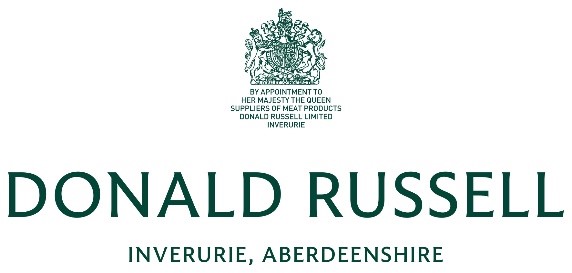Information
-
Restaurant Number
-
Restaurant Manager
-
PIC
-
Conducted on
-
Prepared by
Cross Contamination
-
1. No hands are used to touch raw hamburger. (Meat tongs only. If employee is wearing gloves this is still considered substandard. Observe employee placing meat on grill lanes and stocking.)
-
2. Employee does not use meat tongs (raw hamburger tongs) to handle cooked ready-to-eat (RTE) products. (Observe that the raw hamburger patty tongs are placed back in a separate stainless steel pan after use and they are not used for anything else. They can be used to place any items ON THE GRILL including sirloin patties, chicken, fajita meat, etc....)
-
3. No bare or gloved hands are used to touch raw fish. (If selling fish, the fish should be pre-bagged and dropped directly out of the bag into the fryer.)
-
4. Raw food does not cross-contaminate ready to eat food or packaging. (Look at raw eggs and if they are broken and dripping on ready to eat items or packaging mark substandard. Look at raw hamburger patties and if they are touching a ready to eat food or packaging mark as substandard.)
-
5. Chemicals do not cross-contaminate ready to eat food, packaging, or tray liners. (This means the chemical must actually be leaking onto food, packing, or tray liners. Walk around the back room, chemical storage area, and check under front counter for leaking chemical bottles -- if it is not leaking then this item has met standards.)
-
6. Meat tongs and sear tools are stored correctly and in separate stainless steel pans. Tools much be changed every (4) hours as required by Food Code. (Check tool timer as soon as audit begins. If not running mark as substandard. If tongs or sear tool are stored so they cross contaminate each other or other tools in the grill area mark as substandard. If all tools are not washed when timer sounds mark as substandard -- watch closely to see if all tools are changed including protein cabinet trays, rice scoop, egg rings, tongs, spatulas, sear tool, etc...)
-
8. No raw food is stored above or behind ready to eat food or packaging. (Check for egg storage and hamburger patty storage. If anything is in front of or below eggs or hamburger patties mark as substandard.)
-
10. Rings with stones, artificial fingernails, nails with polish, or jewelry are covered by gloves. (This is for those employees handling food. If somebody is working at drive thru or front counter or doing non food handling tasks then this standard does not apply. If gloves are required in your area, then this standard is usually met unless food servers are not using the gloves.)
-
9. No chemicals are stored above any food or packaging. (Look at chemical storage area, front counter, and any other area you can find chemicals. If food or packaging is stored below a chemical mark as substandard.)
-
11. Spatulas, cutting boards, and knives are used appropriately as identified in the IPP Manual. Tools are washed, rinsed, sanitized and air-dried properly. (Make sure employees are using yellow cutting board and knife for breakfast sandwiches and the white cutting board and knife for non-breakfast sandwiches. Make sure these items are changed when grill tool timer sounds, if not then mark this item as substandard.)
-
12. Iced tea liner at the self-serve station is secured with a zip tie and the white tube is trimmed even with the dispenser. (This only applies to ice tea that the guest can get themselves. If out of the reach of a guest then this standard does not apply.)
Temperature Control and HACCP Knowledge
-
14. Auditor performs HACCP record review. (Go back a total of 5 days making sure the four lowest temperature grill lanes are used, there are no patties below 155, all check boxes are marked, the date is complete including the year, and if anything is missed that corrective action is noted. Do look at the following day as a manager may of written corrective action the day after an item was missed. If ANY ERROR is found then mark this as substandard.)
-
15. Employee(s) demonstrates the correct procedure to take temperatures of products and equipment. (Watch very carefully that the employees uses the correct probe for taking temperatures and cleans the stem probe in between items. Make sure employee does not shine IR beam on metal or plastic and they take temperatures in the walk in between two boxes. It is highly recommended the auditor reviews temperature taking and food safety on the CBT during training.)
-
16. All grill temps in correct range? (Any lane below 325 mark as substandard.)
-
17. Storage refrigerator temperature is in correct range, 41 degrees or less.
-
26. Natural Swiss and shredded cheddar cheese on the cold rail are 41 degrees or less.
-
27. Rice is greater than or equal to 135 degrees F.
-
18. POU grill refrigerator temperature 41 degrees or less.
-
23. Jumbo patty temps all in correct range, greater than or equal to 155 degrees F.<br>
-
22. Regular patty temps all in correct range, greater than of equal to 155 degrees F.
-
25. Shake mix 41 degrees F. or less.
-
20. POU fryer refrigerator 41 degrees or less.
-
19. Guest service refrigerator 41 degrees or less.
-
55. Is a completed corrective action plan in restaurant for any critical items
Final Flip / Visual Check
-
28. Final flip and visual check on all raw hamburger patties performed correctly and consistently (no pink or red meat); juices must be clear.
-
29. Raw egg yolks are cooked thoroughly and visually checked (yolks are solid, not runny).
Employee Health and Hygiene
-
31. No employees are ill (nauseous, vomiting, diarrhea, or jaundice).
-
32. Wounds are bandaged with a BLUE bandage and covered with a food handler glove.
Quality of Hand Washing
-
33. Hands must be washed only at the hand wash sink(s) using soap.
-
34. Hands are washed in running hot water. Hot water is available within 30 seconds at the hand wash sinks.
-
65. TPH procedures are correctly followed
When to Wash Hands
-
36. After using the restroom, wash hands twice (in the restroom and again upon entering the kitchen).
-
37. At the beginning of the shift and after returning from a break.
-
38. After touching human body parts such as face, head, hair, etc...
-
39. After coughing, sneezing on hands, using a handkerchief or disposable tissue, after using tobacco, eating, or drinking.
-
40. After conducting a cleaning activity, handling dirty equipment, utensils, or surfaces, touching a trash can or picking up any dropped item from the floor.
-
41. Before handling food and during food preparation as often as necessary to remove soil and to prevent cross contamination.
-
42. Before putting on food handler gloves.
-
58. Restaurant I following and completing the weekly dial thermo calibration on last page of Food Safety book
Hand Wash Management
-
1. All employees including management inside the restaurant involved in food handling or preparation, ingredient prep, guest service and dishwashing must wash their hands within 15 minutes of the timer going off.
-
45. The timer is always running and reset when it goes off.
General Risk Assesment
-
46. The restaurant is free of any imminent health hazard while operating; a. No sewage/standing water present on floors; b. No water available; c. No rodent/roach infestation; d. No unsanitary conditions; e. No power; f. No fire
-
47. General Health Hazard; a. No standing water in floor sink; b. No Hot water; c. No flies, ants, moths,crickets in kitchen or food storage area.
Miscellaneous
-
47. Quat Sanitizer in buckets is at the correct strength (150-400) and buckets are labeled
-
101. There is one management employee assigned to the restaurant with a current/ valid Food Safety certificate from an approved licensed provider.
Employee Knowledge Check
-
-
2. What products can you handle with the yellow spatula and why is it important? Correct Answer: Eggs (ham for immediate use with egg). Meat spatula (white) must be used to transfer ham to the protein holding cabinet in order to avoid egg allergens from being transferred to other products.
-
3. Name two situations when the restaurant should be closed. Correct Answer: Sewer back up, no electricity, no hot water, fire, or pest infestation.
-
4. What is the acceptable temperature range for the fryers? Correct Answer: 365 degrees +/- 15 degrees no less than 350.
-
PIC










